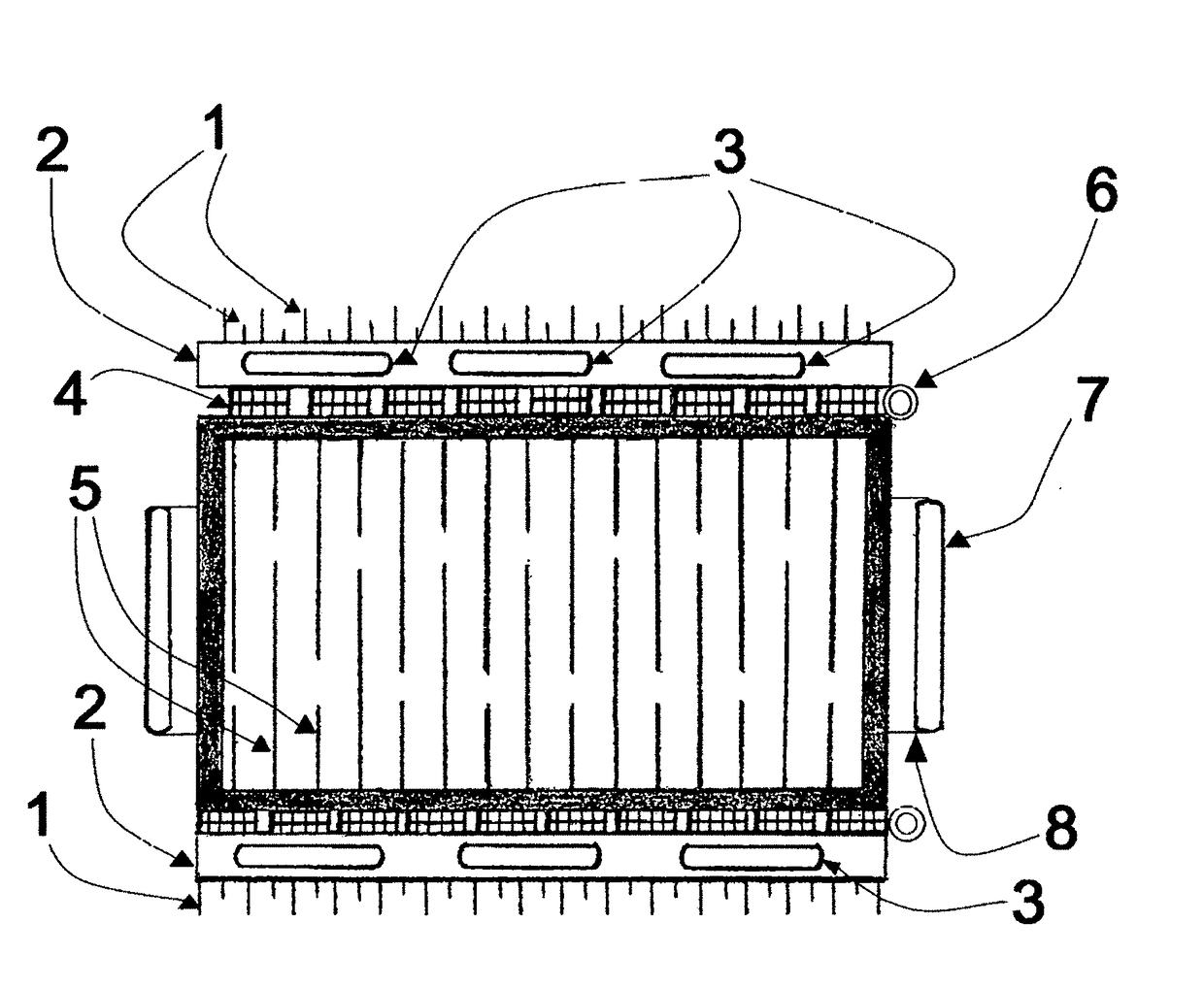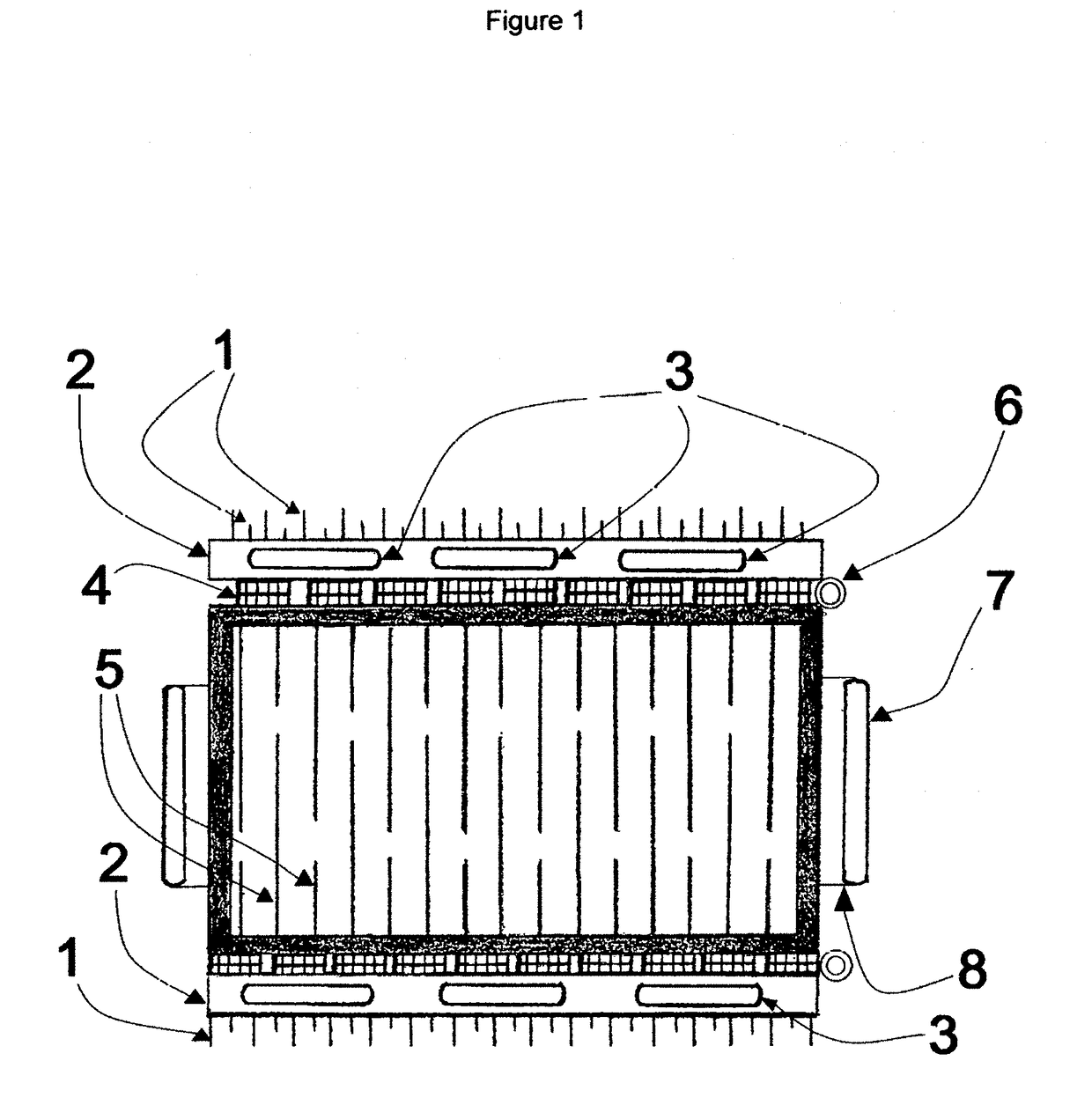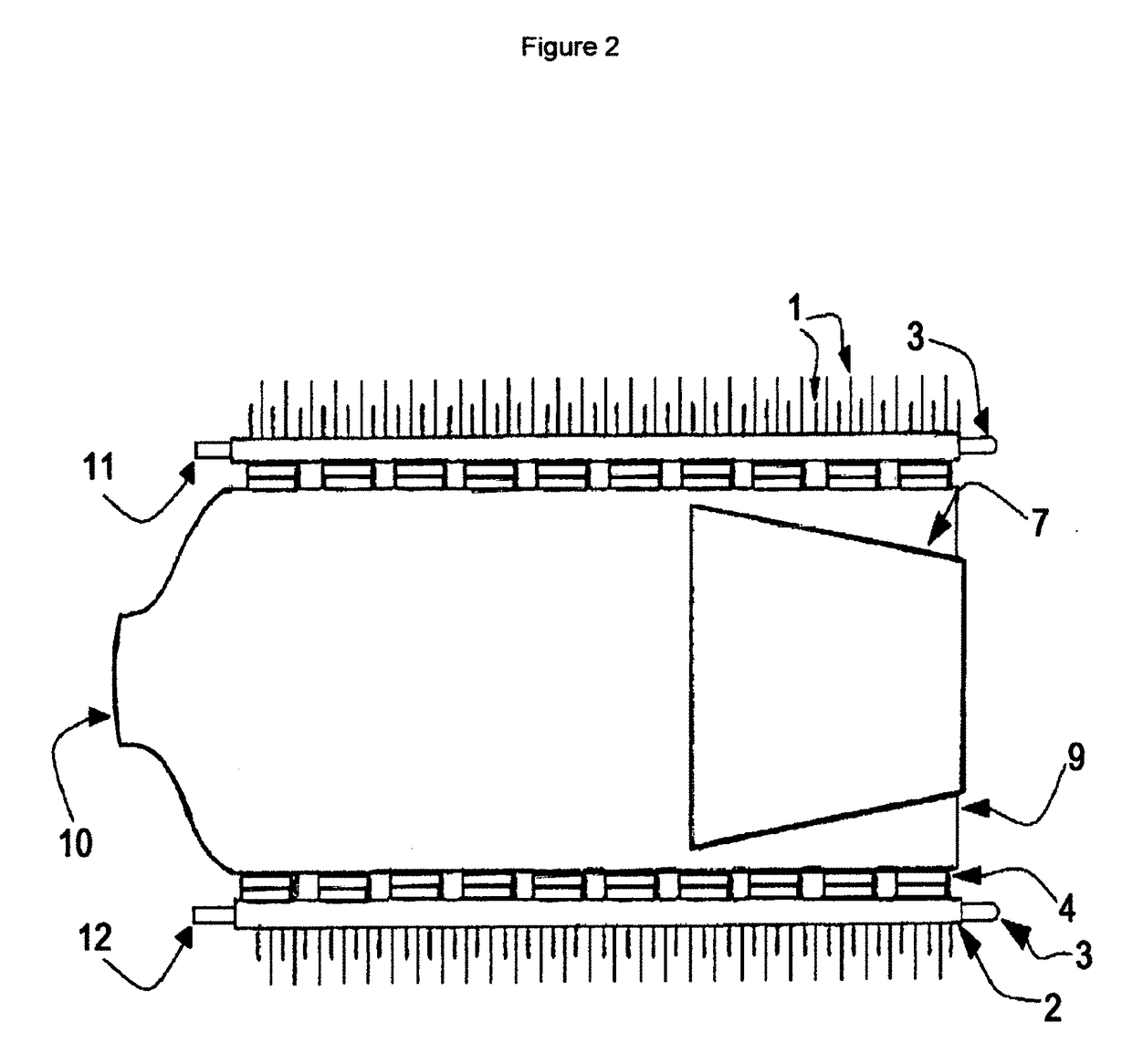Thermoelectric heat energy recovery module
a technology of thermal energy recovery and thermal energy, which is applied in the direction of electric propulsion mounting, machine/engine, vehicle sub-unit features, etc., can solve the problems of less favorable t across the thermopile for the generation of electrical voltage, limit the types of materials that can be employed, and achieve the effect of reducing the back pressure of the exhaust system
- Summary
- Abstract
- Description
- Claims
- Application Information
AI Technical Summary
Benefits of technology
Problems solved by technology
Method used
Image
Examples
Embodiment Construction
Thermoelectric Heat Energy Recovery Module (THERMO) Generator for Application in a Stirling-Electric Hybrid Automobile
[0031]This embodiment of the invention is a Stirling-Electric Hybrid automotive exhaust module generator device for converting waste heat energy into electrical energy by employing the Thermoelectric Effect, also known as the Seebeck Effect. The disclosure herein describes how the invention converts heat energy, from hot exhaust gases, from the operation of an automotive external combustion engine (e. g. Stirling Cycle engine), into electrical energy which is fed back into the electrical system of the Stirling-Electric Hybrid Automobile (U.S. Pat. No. 7,726,130 B2) minimizing losses due to the second law of thermodynamics. The improvements on the art in this disclosure focus on taking advantage of the first law of thermodynamics by increasing residence time of the hot exhaust gases through the module conduit by employing heat sink(s), in the form of a plurality of pi...
PUM
 Login to View More
Login to View More Abstract
Description
Claims
Application Information
 Login to View More
Login to View More - R&D
- Intellectual Property
- Life Sciences
- Materials
- Tech Scout
- Unparalleled Data Quality
- Higher Quality Content
- 60% Fewer Hallucinations
Browse by: Latest US Patents, China's latest patents, Technical Efficacy Thesaurus, Application Domain, Technology Topic, Popular Technical Reports.
© 2025 PatSnap. All rights reserved.Legal|Privacy policy|Modern Slavery Act Transparency Statement|Sitemap|About US| Contact US: help@patsnap.com



